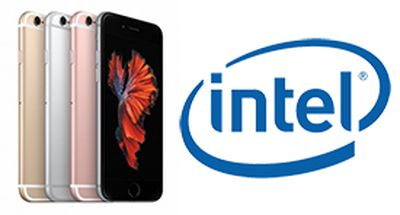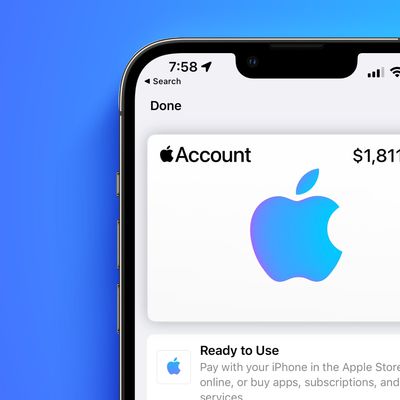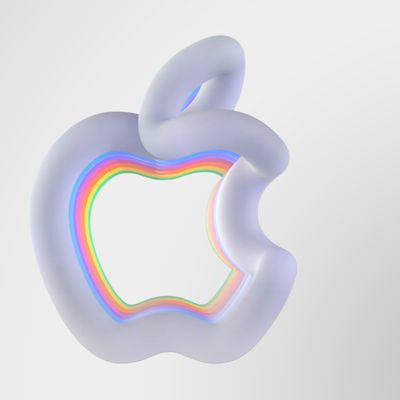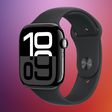Apple to Use Intel Modems in AT&T iPhone 7, Qualcomm Modems for Verizon and China
 Multiple rumors have claimed that Intel will supply at least a portion of LTE and Wi-Fi modems for the iPhone 7 series, alongside existing supplier Qualcomm, and a new report offers a closer look at how the orders will be divided between the companies.
Multiple rumors have claimed that Intel will supply at least a portion of LTE and Wi-Fi modems for the iPhone 7 series, alongside existing supplier Qualcomm, and a new report offers a closer look at how the orders will be divided between the companies.
Bloomberg reports that Intel modems will be reserved for AT&T iPhone 7 models, and some other versions of the smartphone sold in other countries, while Qualcomm is said to remain a supplier of modems for Verizon and all Chinese models. The wording suggests that Qualcomm may retain orders in some other regions as well.
Choosing Intel’s part for an important role in the product that generates about two-thirds of Apple’s annual revenue may represent a calculated gamble by the company. Bringing in second-source suppliers is a long-established practice by device makers looking to make sure they’re in a better position to negotiate on price. However, analysts such as Stacy Rasgon at Sanford C. Bernstein have said that Qualcomm’s modems remain ahead of Intel’s offerings in performance when measured by how much data they can get from the network into the phone.
Qualcomm CEO Steve Mollenkopf previously hinted that the chipmaker would be losing modem orders from one of its major customers to one of its leading competitors, although it is reportedly still "retaining a major chunk" of Apple's business rather than being dropped as a supplier entirely.
Taiwanese website DigiTimes recently reported that Intel would supply "up to 50 percent" of modems for the iPhone 7 series, while CLSA Securities analyst Srini Pajjuri told investors in March that Intel's share of orders would be a "significant portion," likely falling in range of 30 to 40 percent of production.
Apple is rumored to use Intel's XMM 7360 LTE modem [PDF] with faster theoretical download speeds up to 450 Mbps and upload speeds up to 100 Mbps. Meanwhile, Qualcomm's X12 modem is a likely candidate for the iPhone 7, with theoretical download speeds up to 600 Mbps and upload speeds up to 150 Mbps.
Both rumored Intel and Qualcomm modems would be capable of faster speeds than the MDM9635 chipset in the iPhone 6s and iPhone 6s Plus, which provides theoretical download speeds up to 300 Mbps and upload speeds up to 50 Mbps. However, real-world speeds are often slower due to network limitations.
Popular Stories
Since the iPhone X in 2017, all of Apple's highest-end iPhone models have featured either stainless steel or titanium frames, but it has now been rumored that this design decision will be coming to an end with the iPhone 17 Pro models later this year.
In a post on Chinese social media platform Weibo today, the account Instant Digital said that the iPhone 17 Pro models will have an aluminum...
Apple is continuing to refine and update iOS 26, and beta three features smaller changes than we saw in beta 2, plus further tweaks to the Liquid Glass design. Apple is gearing up for the next phase of beta testing, and the company has promised that a public beta is set to come out in July.
Transparency
In some apps like Apple Music, Podcasts, and the App Store, Apple has toned down the...
In select U.S. states, residents can add their driver's license or state ID to the Wallet app on the iPhone and Apple Watch, providing a convenient and contactless way to display proof of identity or age at select airports and businesses, and in select apps.
Unfortunately, this feature continues to roll out very slowly since it was announced in 2021, with only nine U.S. states, Puerto Rico,...
Apple will launch its new iPhone 17 series in two months, and the iPhone 17 Pro models are expected to get a new design for the rear casing and the camera area. But more significant changes to the lineup are not expected until next year, when the iPhone 18 models arrive.
If you're thinking of trading in your iPhone for this year's latest, consider the following features rumored to be coming...
Apple is expanding the ability to add an Apple Account Card to the Wallet app to more countries, according to backend Apple Pay changes.
With iOS 15.5, Apple updated the Wallet app to allow users to add an Apple Account Card, which displays the Apple credit balance associated with an Apple ID.
If you receive an Apple gift card, for example, it is added to an Apple Account that is also...
Three out of four iPhone 17 models will feature more RAM than the equivalent iPhone 16 models, according to a new leak that aligns with previous rumors.
The all-new iPhone 17 Air, the iPhone 17 Pro, and the iPhone 17 Pro Max will each be equipped with 12GB of RAM, according to Fixed Focus Digital, an account with more than two million followers on Chinese social media platform Weibo. The...
Apple should unveil the iPhone 17 series in September, and there might be one bigger difference between the Pro and Pro Max models this year.
As always, the Pro Max model will be larger than the Pro model:iPhone 17 Pro: 6.3-inch display
iPhone 17 Pro Max: 6.9-inch displayGiven the Pro Max is physically larger than the Pro, it has more internal space, allowing for a larger battery and...
The calendar has turned to July, meaning that 2025 is now more than half over. And while the summer months are often quiet for Apple, the company still has more than a dozen products coming later this year, according to rumors.
Below, we have outlined at least 15 new Apple products that are expected to launch later this year, along with key rumored features for each.
iPhone 17 Series
iPho...
 Multiple rumors have claimed that Intel will supply at least a portion of LTE and Wi-Fi modems for the iPhone 7 series, alongside existing supplier Qualcomm, and a new report offers a closer look at how the orders will be divided between the companies.
Multiple rumors have claimed that Intel will supply at least a portion of LTE and Wi-Fi modems for the iPhone 7 series, alongside existing supplier Qualcomm, and a new report offers a closer look at how the orders will be divided between the companies.



















